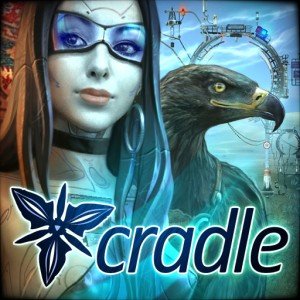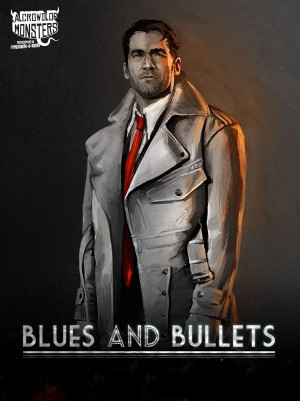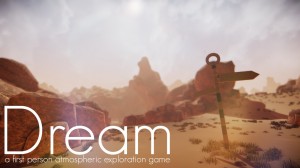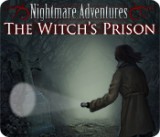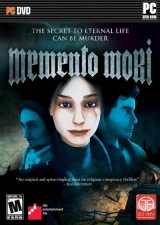Review for The Last Crown: Midnight Horror
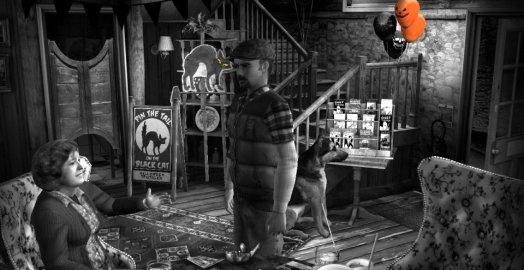
It’s been seven years since we last wandered the town of Saxton using ghost-hunting gadgets to find and free ghosts in The Lost Crown. With the promise of a long-delayed, full-fledged sequel still on the horizon, for now we’ll have to settle for The Last Crown: Midnight Horror for a smaller dose of Halloween-related fun. It’s great to be back in the atmospheric coastal English town, with its gorgeous black-and-white color scheme and unique cast of characters. A lot of the same triumphs and pitfalls from the previous game are still present in Midnight Horror, though the tone is noticeably lighter this time around. Other than the lack of scares, those who enjoyed the first game will get more of the same in this short interlude, while newcomers who don’t take their ghost stories too seriously will find plenty to enjoy as well.
Midnight Horror takes place about six months after the events of its predecessor. The local inn is throwing a Halloween party in its pub, but what starts out as fun and games for returning protagonist Nigel Danvers soon turns into a quest to help free another lost soul. There’s only one ghost to assist in this adventure, though that means the story can focus more on developing its lone deceased character instead of spreading its attention across several. The small reveals about this former sailor due to be married while staying at the inn, are well done. Oddly, however, the reason he was killed is never explained properly. This is frustrating when the point of the game is to find out what happened to him and help him move on.
The other major difference between this game and The Lost Crown is that the spooky atmosphere is missing in Midnight Horror. The Halloween party is a fun affair, with games and free-flowing drinks that encourage Nigel to get drunk. There is no underlying tension, and even the ghost is not threatening when he appears. The only frightening part comes from a jump scare early on. For a game with “horror” in the title, there is disappointingly little of it to find this time around.
Nigel visits with the living as well as the dead, and a lot of Saxton’s familiar townsfolk make an appearance once again. There’s Lucy, Nigel’s ghost hunting buddy; Morgan, the innkeeper of The Bear; the Station Master; Nanny Noah, a mysterious older lady into New Age spirituality; and Rhys, the owner of the local New Age shop all join Nigel for the Halloween festivities. Even the pets make their presence felt, including Rhys’s cat Mr. Tibbs and Nanny Noah’s dog George. Sadly, Bob Tawny, the local fix-it guy, only makes a very brief appearance. Many other characters from The Lost Crown are mentioned in passing, on both sides of the grave. There are also small references to places in Boakes’s previous games, like Barrow Hill Radio and Fetch Rock Lighthouse mugs. It’s a great treat for fans, and though new players can certainly follow the game with no prior experience, they might feel a little lost with all these insider details.
There is new blood in Saxton as well, from Pam Tindle, who runs the costume stall, to nameless punks hanging out in the bathrooms. Nigel himself was a supernatural skeptic in the first game, but after all of the ghosts he helped and everything he’s seen you’d think he would be a believer by now. He even refers to himself as a ghost seeker. But in Midnight Horror, when confronted with a ghost he tries to blame it on alcohol or even the possibility that he is going crazy, which seems an implausible step back in character.
Most of the voice actors reprise their roles except for Rhys, whose replacement does a good job. Many of the performances are well done, such as the Station Master and Nanny Noah, but Nigel still has awkward pauses while he’s speaking. Some of the same music and sounds from the first game are back, mixed with new effects like the screeching of seagulls, fire crackling, and stormy thunder near the harbor wall, which add to the immersion of their respective scenes. The soundtrack is effective, from the opening theme to the techno tunes at the party and MP3s playing in the upstairs rooms. The music tends to sound more mischievous than spooky, which goes with the lighter tone of the game. Some of the sound effects are over-the-top with the lighter theme, like a high-pitched cackling when loading up a game and the successful tone that plays when you win a minigame.
The black-and white aesthetic is back from The Lost Crown, with splashes of color interspersed in the scenery as accents, from bright orange grinning pumpkins to yellow bunting to fireworks and strobing lights. The backgrounds have been created using photos of the real town of Polperro, and the level of detail in each scene is gorgeous. Many of the same places from the first game are seen from a different angle here, which helps make the setting seem somewhat new and interesting for returning players. The character animations remain a bit stiff, and Nigel still glides when he walks, especially when turning. You’d think he’d be more nimble on his feet, as he has lost some weight and looks a lot trimmer these days.
Being a smaller game, Saxton has been narrowed down to Harbor Cottage (the residence where Nigel is staying), the inn and the harbor wall, plus any terrain in between. There are a few new places to visit, like the upstairs rooms and men’s bathroom of The Bear, which adds something different to a town many will already have explored so thoroughly in the first game. Usually there’s an intuitive connection between locations, but sometimes doing a certain action opens up a new area without alerting you, making it hard to figure out what to do next on occasion.
Like its predecessor, Midnight Horror is point-and-click, with the smart cursor changing over interactive objects and Nigel able to quickly move to the next screen by double-clicking an exit marker. Hotspots are usually large, though one or two can be easily missed. Interactive items in the environment can now be rotated around in a close-up view, which doesn’t add anything to the gameplay but is a nice extra touch. Documents can be scrolled down now, instead of the previous game’s cumbersome method of clicking out and then back in further down the page to read through all the text. Nigel has multiple responses to most hotspots, but rather than cycle through them in order, the responses seem to be selected randomly. He might offer the same comment twice in a row, but trying that hotspot a different time may yield a different response.
One of the biggest grievances from The Lost Crown was the inability to skip through dialogue. Thankfully this has been fixed in Midnight Horror, apart from one specific time that seems like a mere oversight. Dialogue options are greyed out once used, which helps keep track of what has been asked. Usually you can choose responses in any order, but when Nigel asks questions of a spirit using a Ouija board, he has to ask them in a certain sequence to further the scene. The dialogue options loop back around if he doesn’t ask them in order, which can be frustrating. The natural progression of questions and answers in this sequence make sense, but it is hard knowing what question to start off with. There are a few small problems with subtitles along the way, including incorrect spelling, discrepancies with the spoken words, and even times when the subtitles say something but the spoken voice is missing.
Many of the spectral interactions are found using one of four different ghost-hunting gadgets. The EMF meter notes electromagnetic fluctuations in the nearby environment that signals ghostly activity. The night vision camcorder picks up on things that cannot be seen with the naked eye, like past echoes. The dictaphone catches electronic voice phenomena (EVP) in an otherwise silent room. And the camera, with its instant printer, helps capture any paranormal activity. Nigel indicates when a gadget would be useful, and they can be aimed in the appropriate direction to pick up the most activity. There are other inventory items as well, though not all of them have to be used, like the sausages and cheese that Nigel can eat.
Although the game is meant as a small reintroduction to the world of Saxton, it has plenty of puzzles and minigames. There’s a spot-the-difference task and a challenge to match masks with nametags using clues from the nametags or Nigel’s own comments. There are unidentified leaves that Nigel needs to make a concoction with based on information available in a book. Another obstacle is overcome using Nigel’s sense of smell. There’s also a puzzle where you pair items with pictures of deceased townsfolk, like Emily Travers, William Ager, and Verity from the previous game, by listening to the sound that comes off the object. Some of the belongings are obvious, while other items don’t seem to have any intuitive connection. Strangely, the game seemed to be gearing up for another puzzle with mysterious symbols and a book to translate them, but it ended up not leading to anything.
Just as in the first game, there is a contest that Nigel can win or lose. In Midnight Horror, success or failure depends on how well you do in the minigames. These include apple bobbing, where you click on six disappearing and reappearing apples within a one-minute time span (which is easily doable); musical statues where Nigel must stop dancing all ten times when the music goes silent (which seems excessive); pin the tail on the black cat, where Nigel (and the player, in a temporary switch to first-person perspective) is blindfolded and can see only a faint outline of where the cat is; and guess-the-ghost, in which a local townsperson plays a ghost and Nigel can ask three questions from a list to narrow down its identity. The ghost can be a different townsperson each time Nigel plays, which adds a bit of variety. Winning these challenges is optional, but you can redo any of them if you fail or even if you just want to play them again.
Nigel says he is dreaming of a place called Blackenrock, which hints at bigger – and hopefully darker – things for the next game. For now, Midnight Horror serves as a lovely little reintroduction to an abridged version of Saxton after seven years away, a small game that still takes about five hours to complete thanks to a welcome amount of varied gameplay. Those expecting more of a horror vibe will be surprised by the often lighthearted tone this time around, but with the right expectations going in, both old players and new will find more treats than tricks in this Halloween-themed adventure.
WHERE CAN I DOWNLOAD The Last Crown: Midnight Horror
The Last Crown: Midnight Horror is available at:
- Itch.io -50%









